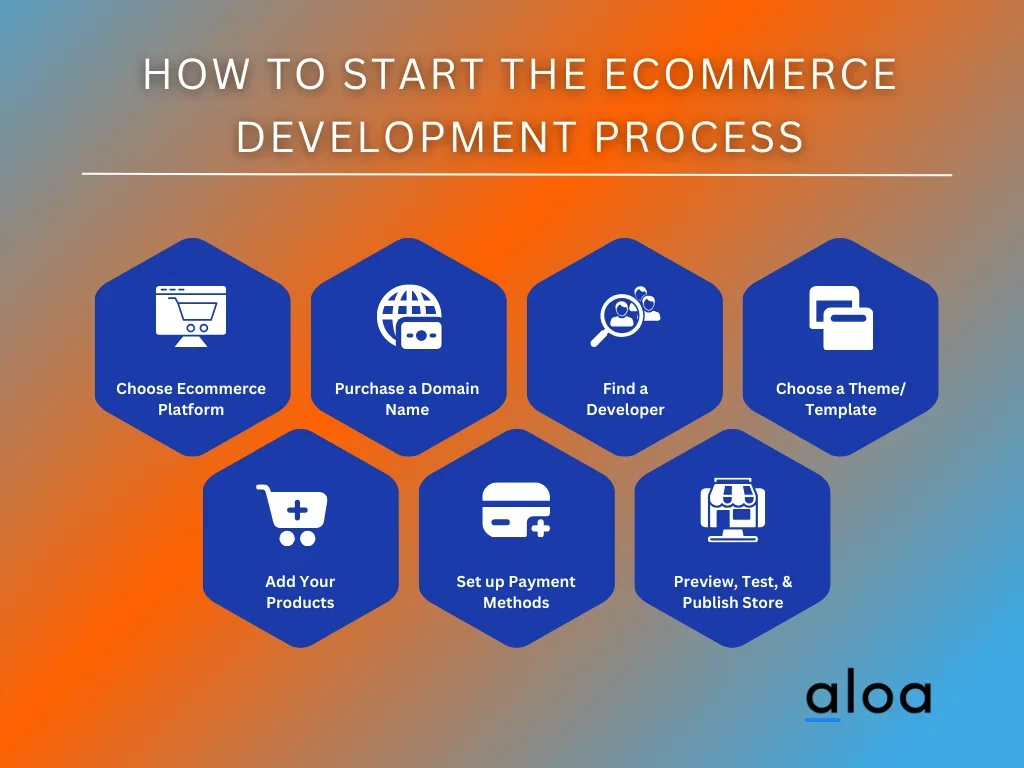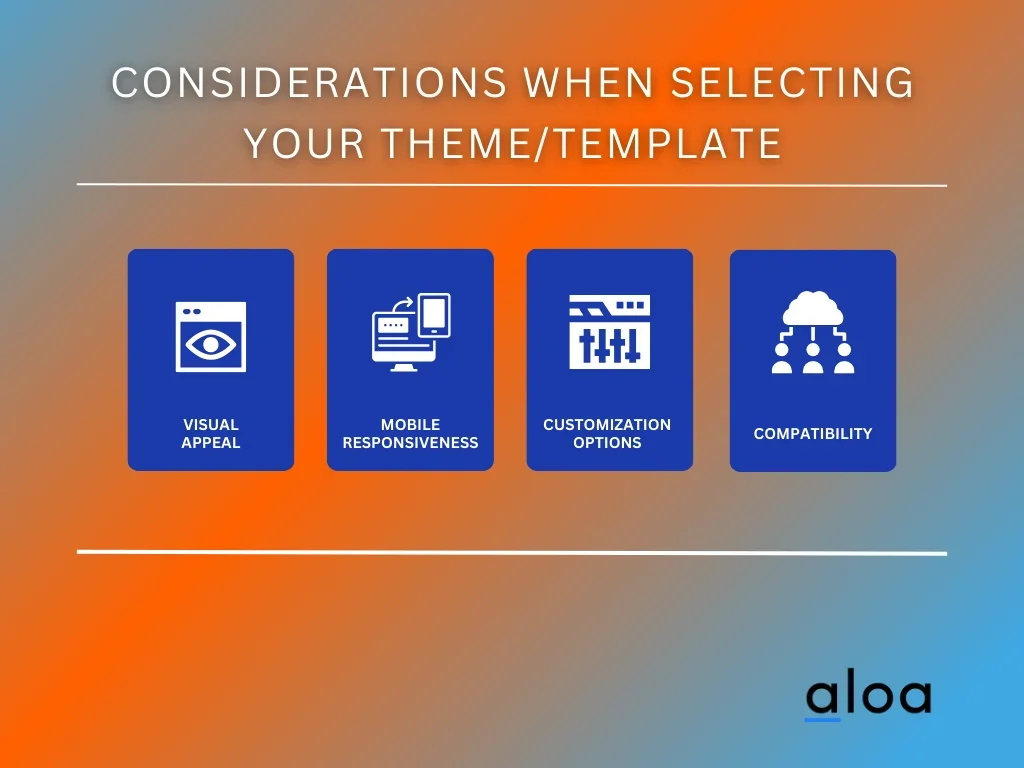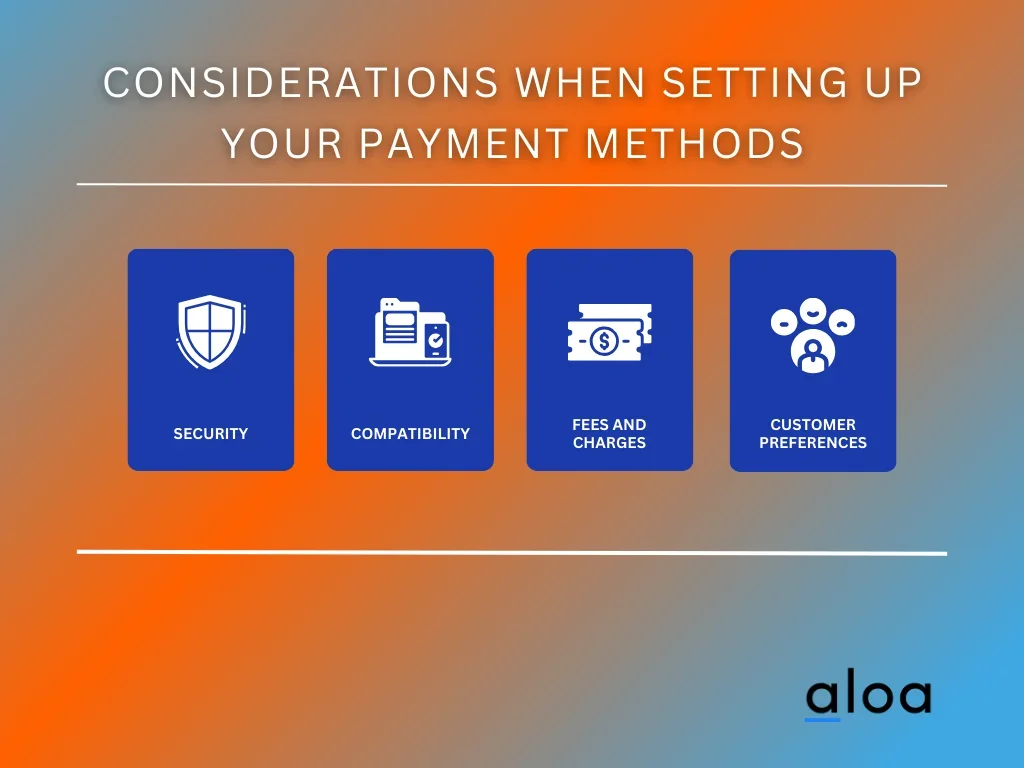Ecommerce is gaining widespread use among businesses, offering a convenient platform for online buying and selling goods and services. As the digital landscape continues to evolve, ecommerce development plays a pivotal role in shaping the modern ecommerce industry.
However, to thrive in this ever-changing environment, businesses must adapt to emerging ecommerce trends and technologies to meet the evolving needs of online shoppers.
Aloa, a software outsourcing firm, prides itself on their team of expert developers who excel in ecommerce development. With their unparalleled expertise and dedication, Aloa’s developers craft bespoke solutions to elevate your ecommerce ventures to new heights of success.
In this blog, we will delve into the intricacies of ecommerce development, exploring its features, uses, and benefits in the modern digital landscape. By the end, you’ll understand how ecommerce development can revolutionize your online business and drive sustainable growth.
Let’s dive in!
What Is Ecommerce Development?
Ecommerce development involves creating and enhancing online platforms for buying and selling goods and services. It encompasses designing user-friendly interfaces, optimizing mobile responsiveness, and integrating features like inventory management. This process aims to provide a seamless and efficient online shopping experience for both businesses and consumers, often enhanced by innovations like an AI agent for e-commerce that streamlines customer interactions and product recommendations.
The significance of ecommerce website development lies in its ability to create a seamless online shopping experience that drives conversions and revenue for businesses. A well-developed ecommerce website attracts customers and retains them by offering intuitive navigation and efficient purchasing processes.
Moreover, ecommerce web development is vital in enhancing a brand’s online presence and visibility. Whether building from scratch, customizing a SaaS platform, or adopting the MACH architecture, choosing the right approach to ecommerce development is crucial for achieving business objectives and satisfying customer expectations.
How To Start the Ecommerce Development Process
Embarking on the journey of ecommerce development can be a rewarding endeavor for businesses seeking to establish or expand their online presence. Here’s how to start the process and lay a solid foundation for a successful online store:

Step 1: Select the Right Ecommerce Platform
Selecting the right ecommerce platform is crucial for the success of your online store. Consider factors like your business model, scalability, customization options, and budget when choosing between open-source platforms, SaaS solutions, or headless commerce.
Each option offers unique benefits and challenges, so take the time to research and analyze which platform aligns best with your specific needs and long-term goals. Additionally, evaluate the platform’s performance, check website traffic capacity, mobile optimization, and security features to ensure it can effectively handle your current and future requirements.
Remember, the ecommerce platform is the backbone of your online business, so making an informed decision at this stage is essential.
Step 2: Purchase a Domain Name
Purchasing a domain name is crucial for establishing your online presence and creating a memorable brand identity. It serves as the foundation of your website, influencing your online visibility and credibility in the competitive ecommerce landscape.
Here are the considerations when choosing your domain name:
- Relevance: Ensure your domain name reflects your brand identity and the products or services you offer, making it easy for customers to remember and associate with your business.
- Simplicity: Opt for a domain name that is easy to spell and pronounce, minimizing the risk of misspelling and enhancing brand recognition.
- Brandability: Aim for a unique and memorable domain name that sets you apart from competitors and resonates with your target audience, fostering brand loyalty and trust.
- Extension: Select the appropriate domain extension (.com, .net, .org, etc.) that best represents your business and aligns with your marketing goals and target audience demographics.
Choosing the right domain name is critical for your ecommerce success, so take the time to consider these factors carefully.
Step 3: Find a Developer
Finding a skilled developer is crucial for the success of your ecommerce development process. With their expertise, they can streamline the development process and create a successful ecommerce website that meets your business needs. Look for developers with experience building ecommerce websites and a solid understanding of your requirements. Consider their portfolio, timeline, and references to ensure they can deliver according to your expectations and within your budget.
Communication is vital in hiring an ecommerce software developer, so establish clear lines of communication and discuss your project goals, timeline, and budget upfront. Additionally, ensure the developer shares your vision and can effectively bring your ideas to life. Collaborate closely with the developer throughout development, providing feedback and guidance as needed.
Step 4: Choose a Theme/Template
Choosing a theme/template is pivotal as it determines your website design and functionality, which shapes the user experience and visual appeal and ultimately influences customer engagement and retention rates.
Here are the considerations when selecting your theme/template:

- Visual Appeal: Opt for a theme/template that aligns with your brand identity and appeals to your target audience, enhancing engagement and conversion rates.
- Mobile Responsiveness: Ensure that the theme/template is mobile-friendly to accommodate the increasing number of mobile users using mobile devices and tablets, optimizing their browsing experience.
- Customization Options: Look for themes/templates that offer ample customization options, allowing you to tailor the design to your brand’s unique aesthetics and requirements.
- Compatibility: Verify that the theme/template is compatible with your ecommerce platform and any necessary plugins, ensuring seamless integration and functionality.
A suitable theme/template is crucial for creating a visually appealing and user-friendly ecommerce website that effectively showcases your products or services to potential customers.
Step 5: Add Your Products
Adding your products is a crucial step in the ecommerce development process. Create detailed product listings with high-quality images, compelling descriptions, and relevant attributes. Organize your products into categories and subcategories to make navigation easier for your customers. You can even use ecommerce product description generator tools to save time in adding all of your information.
Consider implementing filters and search functionality to help users find specific products quickly, enhancing their experience and improving your site's visibility in search results. Optimize your product pages for search engines by incorporating relevant keywords and meta tags to increase visibility and attract potential customers on online marketplaces.
Ensure your product pages are mobile-responsive and load quickly to provide a seamless shopping experience across all devices. Finally, regularly update your product catalog and inventory to keep your website current and meet your customers’ needs.
Step 6: Set up Payment Methods
Setting up payment methods is a great way to facilitate secure transactions between businesses and customers, ensure the confidentiality of payment information, and streamline the payment processing aspect of your ecommerce business. This enhances trust and convenience in the buying process, contributing to a positive user experience and potentially increasing sales.
Here are the considerations when setting up your payment methods:

- Security: Ensure the chosen payment gateway offers robust encryption and compliance with industry security standards to safeguard sensitive customer information.
- Compatibility: Select payment methods that are widely accepted and compatible with various devices and platforms to cater to a broader customer base.
- Fees and Charges: Evaluate the transaction fees and charges associated with each payment method to optimize cost-effectiveness and minimize operational expenses.
- Customer Preferences: Consider offering multiple payment options to accommodate diverse customer preferences and improve conversion rates.
Setting up efficient payment methods streamlines the checkout process. It fosters customer satisfaction and loyalty, ultimately driving business growth and success.
Step 7: Preview, Test, and Publish Your Online Store
Previewing, testing, and publishing your online store is the final step in ecommerce development, encompassing crucial elements like shopping cart functionality, user interface design, and page speed optimization. Begin by thoroughly reviewing your website to ensure all elements function correctly and the web design aligns with your brand identity.
Conduct extensive testing across different devices and browsers to identify and fix compatibility issues, ensuring a seamless shopping experience for your customers.
Once you’re satisfied with the performance and functionality of your online store, it’s time to publish it on the web. Choose a reliable web hosting provider to ensure optimal performance and uptime for your ecommerce site. Additionally, implement analytics tools to track visitor behavior and make data-driven decisions to optimize your website further.
Finally, leverage your ecommerce CMS to promote your online store through various marketing channels to attract visitors and boost sales. If you target social media and have a business Instagram profile consider the option to buy real Instagram followers who can complement your organic followers in building traffic to your ecommerce store. Continue to monitor and refine your site based on user feedback and performance metrics for sustained growth and ultimate success.
Professional Ecommerce Development vs. Do-It-Yourself
Professional ecommerce development and do-it-yourself (DIY) approaches have merits but cater to different needs and priorities. Here are the differences between opting for professional ecommerce development and tackling it yourself to help you make an informed decision for your business needs:
- Expertise: Professional development involves experienced teams with in-depth knowledge of coding, design, and ecommerce best practices, while DIY solutions rely on the user’s own skills and learning resources.
- Customization: Professional developers offer tailored solutions with extensive customization options to meet specific business needs. DIY platforms provide pre-designed templates with limited customization capabilities.
- Scalability: Professionally developed ecommerce websites are built to scale and handle growth efficiently. Meanwhile, DIY platforms may struggle to accommodate increasing traffic and functionality demands.
- Professionalism: You can work with an agency to take all of the workflow off of your plate. While it adds more costs, it will free up your time. You can leverage an ecommerce growth agency, ecommerce development agency, or even an ecommerce ppc agency to help take you to the next level.
- Time and Effort: DIY solutions require more time and effort from the business owner, who must handle design, development, maintenance, and troubleshooting tasks, whereas professional developers manage the entire process, allowing the business owner to focus on other aspects of their business.
- Support and Maintenance: Professional developers provide ongoing support, maintenance, and updates to ensure the website’s optimal performance and security, while DIY solutions may lack dedicated support and require the user to handle maintenance tasks independently.
- Cost: Professional ecommerce development caters to the unique needs of big and small businesses by providing a more robust and efficient website in the long run, despite higher upfront costs. On the other hand, DIY solutions offer lower initial expenses. Still, they may lead to additional costs for plugins, upgrades, and maintenance over time, making it essential to weigh these factors based on your business goals and specific requirements.
Benefits of an Ecommerce Website for Online Businesses and Sellers
An ecommerce solution, including B2B ecommerce solutions, offers myriad benefits for online businesses and sellers, revolutionizing how they operate and connect with customers. Here are the benefits that an ecommerce website offers to enhance sales, reach a broader audience, and streamline operations:

Global Reach and Expanded Customer Base
With an ecommerce development website, businesses can transcend geographical limitations, reaching customers worldwide and unlocking opportunities to tap into new markets and customer segments.
Through strategic digital marketing efforts, businesses can attract a diverse audience and grow their customer base exponentially. This global presence also enables round-the-clock sales, catering to customers in different time zones, leading to increased revenue streams and business growth.
Lower Operational Costs and Increased Profit Margins
Compared to traditional brick-and-mortar stores, operating an ecommerce website, especially a B2B ecommerce platform, typically involves lower overhead costs. There’s no need to invest in physical storefronts, utility bills, or extensive personnel for day-to-day operations.
This cost efficiency translates to higher profit margins for businesses, allowing them to allocate resources toward other crucial areas such as marketing, product development, or customer service. Additionally, automation tools and software streamline various processes, reducing manual labor and associated expenses and enhancing profitability.
Convenient Shopping Experience for Customers
Ecommerce development websites offer unparalleled convenience for shoppers, allowing them to browse, compare, and purchase products or services from the comfort of their homes or on the go. This convenience factor attracts and retains customers, who appreciate the ease of finding desired items without physical constraints.
Furthermore, personalized recommendations, easy payment options, and hassle-free return policies enhance the shopping experience, fostering customer loyalty and repeat business.
Data-Driven Insights and Analytics
Ecommerce platforms provide valuable insights into customer behavior, preferences, and purchasing patterns through robust analytics tools. By analyzing data related to website traffic, sales trends, and customer demographics, businesses can make informed decisions to optimize their marketing strategies and product offerings.
Utilizing data-driven insights from ecommerce development empowers businesses to customize marketing campaigns, refine product offerings, and elevate the overall customer experience, driving sales and revenue growth. Moreover, real-time analytics facilitate agile decision-making, enabling businesses to swiftly adapt to market changes and maintain a competitive edge.
Scalability and Flexibility
Ecommerce development websites offer scalability, allowing businesses to easily adjust their operations according to fluctuating demand and growth trajectories. Whether it’s expanding product lines, accommodating increased website traffic, or entering new markets, ecommerce platforms provide the flexibility to scale operations seamlessly.
This scalability eliminates the constraints associated with physical storefronts and enables businesses to grow organically without geographical limitations. Additionally, the flexibility of ecommerce platforms allows businesses to experiment with different marketing strategies, promotional offers, and product variations to optimize sales and maximize profitability.
Improved Brand Visibility and Credibility
An ecommerce website is a powerful tool for brand building and increasing visibility in the digital landscape. Through search engine optimization (SEO) techniques, businesses can enhance their online presence and rank higher in search engine results, driving organic website traffic.
A well-designed and user-friendly ecommerce platform instills trust and credibility among potential customers, leading to higher conversion rates and customer retention. Social proof elements such as customer reviews, testimonials, and ratings further validate the brand's credibility, influencing purchase decisions positively. Use Social media as well to promote your website and gain more visibility around globe, this will help you to get more social media followers on different social media platforms.
Key Takeaway
Ecommerce development is a dynamic and essential process for businesses looking to establish a solid online presence and capitalize on the growing digital marketplace. With the right platform, design, and functionality, businesses can create user-friendly, secure, and scalable ecommerce websites that cater to the evolving needs of their customers.
By embracing ecommerce development as a strategic investment, businesses can unlock new opportunities for growth, expansion, and success in the digital age.
Are you ready to take on your own ecommerce development in 2024? Explore our web developer hiring process or look through the Aloa blog for insights into the latest ecommerce trends. We’ll regularly release blogs that keep you updated on the latest developments in the industry and help you stay ahead of the curve!

